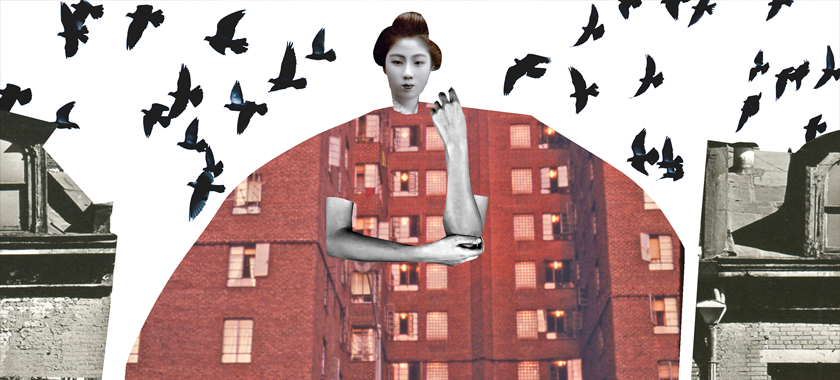
Residencies, Grants, and Fellowships for Writers: Nailing the Application
Establishing a sustainable writing life starts with making a compelling case for yourself. Learn from writers who’ve earned competitive opportunities to focus on and expand their craft.
Are you a writer seeking more support from your practice?
Read this article to get tips on what writing samples to submit, how to write your statement of purpose, and specific success story case studies from accomplished literary writers Jonathan Escoffery, Maggie Millner, and Jemimah Wei. These insights come courtesy of a NYFA Learning panel discussion that was moderated by writer Kyle Carrero Lopez.
Selecting Quality Writing Samples
Regardless of whether you’re applying for a residency, grant, or fellowship, you’ll want to have quality writing samples to submit with your application. Wei, Millner, and Escoffery offer their advice for what to include below.
“As a writer, you actually do have a gut feeling of what you resonate the most strongly with. It could be something that is more recently aligned with your artistic goals as you mature as an artist,” said Wei. She added: “My poet friend Cindy Juyoung Ok said that for her, she recommends thinking about a writing sample in terms of what you won’t regret submitting. There is so much arbitrariness and luck that comes with being accepted to things, so you might as well give it the most sincere shot you have.”
Millner agreed with Wei that your writing samples should represent who you are and what your goals are as a writer. In Escoffery’s experience, it boils down to what he is most excited about: which could be his “last best piece” that wound up in a magazine or something in manuscript form that no one has yet seen. “It’s what best represents me and where I’m at today as an artist. And it tends to be the thing that actually gets me into the next residency or fellowship program.”
Poets will most likely submit a packet of poems, either a long poem, a section of a long poem, or a packet of various short, lyric poems. Millner has found success considering the pieces as a whole: “I’ve had more successes putting together work that speaks to each other. So there’s a kind of thematic cohesion.”
This speaks to the people reviewing the work, as Millner points out that “Usually, when fellowship juries are selecting you, they’re selecting you on the basis of their hope that you’re going to make something of substantial size through the opportunity,” adding that “A sample that might represent a sort of microcosm of your larger manuscript is very, very helpful for them to get a sense of what this kind of scope of work might be.”
This type of thinking can apply to fiction writers, too. “If you’re selecting an excerpt versus if you’re selecting a short story or an essay, something that’s inherently self-contained. What you want to facilitate for the jury is a kind of reading experience,” said Millner.
Whatever the discipline, Millner encourages you to think of the reviewer as a reader foremost. “These are readers who you want to have some kind of aesthetic, emotional, and intellectual response to your work. Keep in mind that you’re trying to facilitate an experience that has a holism and an arc to it.”
Escoffery underscores the importance of engaging the reader early on. “Readers don’t have a lot of time to sit with your work and consider it. If they know the setting, the main characters, and what the conflict is as early as possible, you can ground them very quickly in your story.”
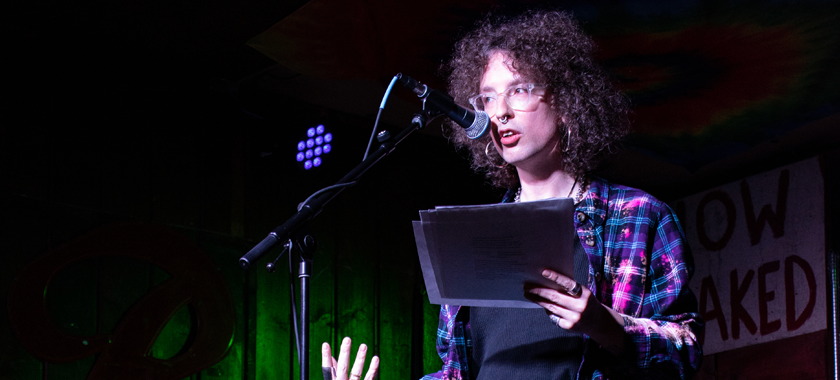
Getting Feedback and Revising Drafts
Always polish your work before sending it out into the world. Additional eyes will help you to better understand what resonates with readers and will inform changes that will make your work stronger.
Wei sends her draft to first readers who are both writers and non writers. “The reason why is because, firstly, I want to get the non-industry idea on these things. And I also want to know that my work is connecting with people who aren’t necessarily habitual readers. It is also realizing that there are at least two levels of screening. You have screeners who are probably volunteers or alumni screening the first and second level. So I’m thinking of how my work can appeal to a range of people and then based on feedback do revisions.”
She does at least 10 to 15 revisions before sending it out. “It isn’t necessarily about polishing it for an application. I polish everything, anyway,” she added.
For Millner, this sort of polishing could happen in a workshop, through peer feedback, or through the editorial process when you’ve had a piece published. “Often the work that’s been through a workshop or that’s at least been on your hard drive for a couple of months that you’ve fallen in and out of love with enough times that you can look at slightly more objectively will better serve you.”
Escoffery uses the work of other authors as a litmus test for his work. He typically works in multiple drafts, putting drafts aside and revisiting over time. “The last thing for me is reading the work of authors who I feel like my work is in conversation with and if I read one of their stories or a chapter of their novel and I don’t feel embarrassed when I go back to my own work, I think ‘Wow!’ I think my best stuff right now could possibly sit next to my favorite writer’s stuff. That’s when I feel really confident about it and that it’s probably ready to be seen.”
Refining Your Statement of Purpose
A statement of purpose is the other big part of writing applications. It is basically a way of summarizing who you are as a writer, what you’re looking to do, and why the opportunity you’re applying for can help you to achieve it and accomplish larger future goals.
Escoffery asks himself these questions when considering the statement of purpose: “How do I articulate what I’m trying to accomplish on the page? What contribution am I giving or attempting to give to literature? Are these greater conversations that we’re having as artists in the world?”
He also encourages you to think of yourself as the main character in a story. “What are the stakes of your story? What are the stakes of you getting or not getting this opportunity? Place yourself in the position so that panelists understand you are perfectly poised for whatever it is they are offering you to take that next step, and oftentimes it could be helpful to copy and paste the mission statement off the website that is describing whatever it is they are offering you.” Really learn about what the opportunity is so that you can highlight how it will not only benefit you, but add value to them.
Wei suggests tailoring the statement to what you’re applying for, as well as finding ways of again connecting with your readers. “I’ve moved towards being more sincere in my statements because that not only plays with the tone of my writing but also helps readers feel a connection with my work.”
More practically, she advises that you: “Think about what language you’re using in your statements and say something really specific about your work and what you’re trying to do as an artist.” For Wei, it is about communicating her vision of the world, or a vision of what she sees literature should be doing and can possibly be doing.
Millner starts with the “What.” Like, “What is the project that I’m hoping to be working on? Or, in the case of a conference, What’s the project that I’m in the middle of that this experience would really feed?” She notes that while it is incredibly difficult and impressive to simply describe clearly and lucidly what your in-progress project is, the idea of distilling it to its core is crucial.
Once you have the “What,” Millner says to consider the “Why” including questions like “Why is this project necessary to be in the world?” and “Why are you the person to make this work?” After answering the “Why is this project necessary” piece, answer “Why me? This is where you zoom away from the project itself and describe what it is about your experience as a writer, and identity and background as a human, that might equip you to be the person to tell this particular story,” she added.
While most application statements have a 1-2 page limit, Wei says to write long and then boil it down. “Because that is actually you explaining to yourself what you’re trying to do.” It may help you feel less intimidated when writing to feel less hemmed in by page count.
Escoffery, who keeps a five-page master document that he excerpts depending on the opportunity, highlights that these statements evolve with time. “The first one I really wrote was for my MFA applications, and it was terrifying. But you keep those documents, and you continue to revise them, and you continue to add your experience, and you continue to elaborate on your life journey. It gets easier and it gets better as you revise and revise.”
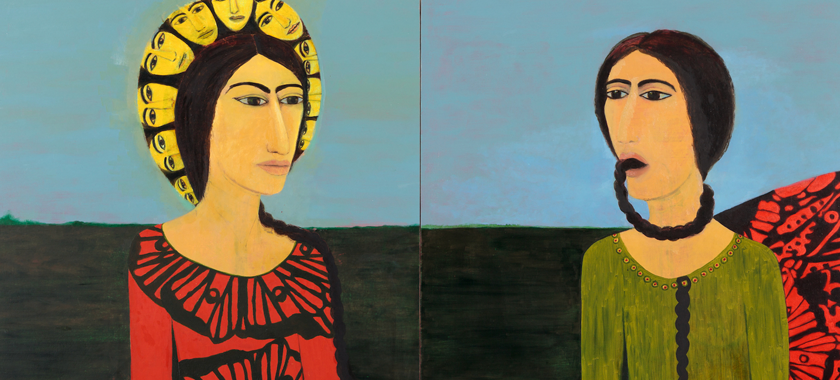
Tracking Opportunities
Wei spoke about tracking opportunities in an excel sheet as a helpful step to take before starting specific applications. “Keep track of everything that’s out there and keep updating as you go. For new residencies, fellowships, and grants, having a column for what the opportunity is, what the deadlines are, and a bullet point list of what the requirements are is very helpful.” [Editor’s Note: visit our “Find and Track Applications” article for more on this topic!].
Wei also recommends separating these opportunities based on where you are in your career, and thinking about how these opportunities play into the larger network of how you’re building your career. For example, she flagged that a lot of early career opportunities are only really available to writers who are at the very start of their careers. A specific opportunity, like Reese’s Book Club’s LitUp Fellowship, is for writers who are non-agented. There are other unpublished opportunities, like the Elizabeth George Foundation grant in the U.S. and the Deborah Rogers Foundation grant in the UK. “Understanding what category you’re applying for is crucial because these opportunities exist within a larger ecosystem,” she says.
Case Study: Jemimah Wei & Writing Conferences (The Sewanee Writers’ Conference)
Transitioning to the topic of conferences, Wei suggests Vanessa Chan’s list of “19 Conferences for Emerging and Established Writers” as a good place to start if you’re new to conferences.
She encourages you to think about the type of environment that works best for you, cautioning that some conferences are intensely social and may mean hanging out with 100 people for two weeks! Also consider how much it will cost, what funding might be available to you, how genre-specific the conference is, and what it will cover. “A lot of conferences are workshop-centric, and include craft talks and special topic classes. And you get meetings with agents and editors and it’s not like the chance to read your work publicly,” she added.
Diving deeper into application materials, Wei notes that what you submit for a conference differs from what you’ll submit for a workshop. As there are several levels to the decision-making process, she suggests putting something forward with a strong immediate hook since reviewers aren’t obligated to read through to the end. An example of an unconventional beginning Wei shared from the first line of Jami Nakamura Lin’s speculative memoir is: “I was born with blue on my butt and a story in my mouth.”
This line gives a sense of what the voice of Lin’s memoir might be, and also the voice of her writing sample. Wei also suggests considering the voice of your materials as a whole, creating a consistency that will best represent you to reviewers.
“When I applied for Sewanee, I was talking about how writing for me is not simply an aesthetic endeavor. It’s something I really care about in terms of writing stories and creating a literary vision that has been hard and which depicts moral contradictions and inherently complicated situations with generosity and compassion. That is something I try to do in my work, and that is something I try to emulate as well,” said Wei.
This sentiment touches on another important aspect that conferences bring: the opportunity to make and foster community. In the past, Wei has noted works that have moved her, linked them to her clarity of vision, and mapped it into a desire to develop enduring relationships that can help her to refine, share, and better her work. She used this approach with Sewanee, connecting it back to why the environment would be helpful.
“It’s really important to think about how you’re going to fit into your community and how you might benefit from being in community at the conferences that you apply for,” she said.
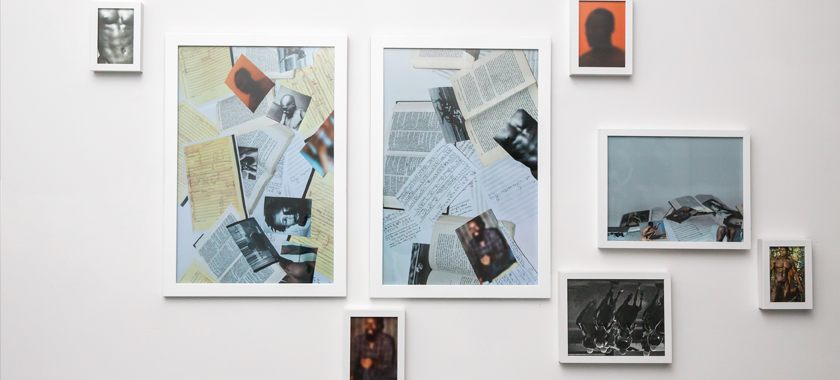
Case Study: Jonathan Escoffery & Residential Fellowships (The Wallace Stegner Fellowship)
Escoffery agreed with Wei’s above sentiments on community, seconding that conferences and workshops can play a major role in your writing career on what opportunities might come your way. Not only do you interact with and meet peers, you will meet editors and agents (and potentially future editors, agents, and reviewers!).
To that end, he suggests building a basic website if you do not already have one with “a short bio or short statement that talks about what kind of writing and art you’re interested in creating, reading, or seeing in the world.” It will help to have that kind of present, because when you start submitting your work and applications it will act as a landing page where people can find you.
Escoffery shifted to his experience with the Stegner Fellowship at Stanford University (where Wei was also a Fellow), citing a couple of other examples including the Hodder Fellowship at Princeton University and the Radcliffe Fellowship at Harvard University. For background, the Stegner Fellowship is a two year program where Fellows are expected to be in residence in the San Francisco Bay area. They select five fiction writers and five poets to participate each year, who receive a $50,000 stipend each year.
From September to June, Fellows attend a weekly writing workshop where participants read and give critical feedback to their peers. Escoffery highlights that the other six days of the week enable participants the freedom to create. After the program concludes, Fellows can apply for lectureships or TA-ships at Stanford. There’s also what’s called the Levinthal Tutorial, which gives Fellows the opportunity to mentor an undergraduate in a directed independent study.
Pivoting back to statement specifics, Escoffery underscores the importance of being a subject matter expert in what you’re trying to do that’s based on your own unique identity. “It could be one big part of it, depending on what it is that you’re writing and when I say identity, that might be your racial or ethnic background. But it could also be your geographic location where it is,” he said.
For example, Escoffery’s first book If I Survive You (Macmillan 2022), which was a Finalist for the 2023 Booker Prize and Longlisted for the 2022 National Book Award for Fiction, and his forthcoming second book take place in Miami, FL. “I grew up in Miami. I’m writing about Jamaicans and Jamaican Americans. I’m a Jamaican American. But you could also talk about your career or education.”
Though you might not write in your statement about being the first of the only person to be doing a thing or writing a book on a particular topic, Escoffery counsels that you “might talk about being part of a particular wave of writers and artists who are exploring a particular topic that is underexplored.”
He adds that if the topic/s you explore in your work connect back to conversations that are already happening in the national consciousness, it can help your readers to further understand why it’s important to support it. Just be sure to frame it in your statement, making the connections clear.
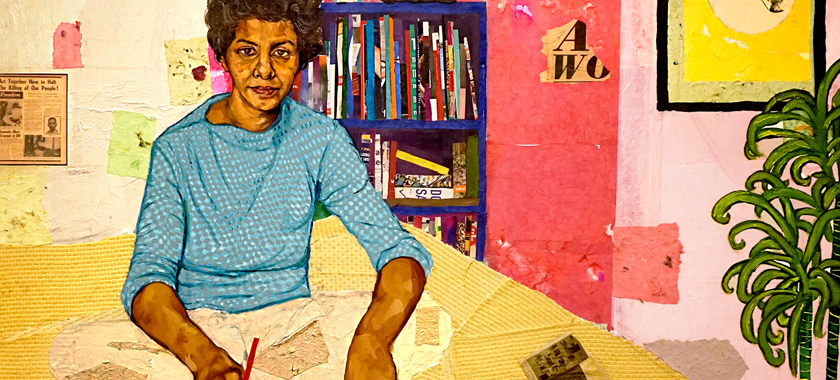
Case Study: Maggie Millner & Fellowships (Olive B. O’Connor Fellowship and Stadler Fellowship)
The O’Connor Fellowship and Stadler Fellowships are year-long residential fellowships comparable to the Wisconsin Institute Creative Writing Fellowship or the Wallace Stegner Fellowship (mentioned above). They offer a chunk of writing time, often after an MFA or after a period of generating a lot of material, to hunker down and not have too many responsibilities while getting health insurance and a monthly check to polish up or finish a manuscript.
Millner shared an example statement that she wrote for the O’Connor Fellowship, highlighting a characterization that she included of the Fellowship and what receiving it would mean to her craft and teaching practice. She also included a synopsis of her project, and more about who she is and the work she was doing. For example: “At the time of writing, I’m nearly halfway through a first draft of the book, having written more than 20 poems that feel essential to the project.”
She continued: “Tell them what you need and where you’re at, and the timeline you’re hoping to complete your manuscript by.” Part of the O’Connor Fellowship involved teaching, so she made sure to highlight what she wanted to get out of that aspect of the program. She emphasizes that you thoughtfully tailor your statement to the opportunity to show the panelists that you fully understand what it is and why you are a fit. Particularly for a program that is housed within a university setting, you want to write for your audience, who are department chairs and professors and part of a larger academic community.
For the O’Connor Fellowship, that also meant including her approach to teaching creative writing. “In my statement of purpose, I was really highlighting both my pedagogy and my particular writing project, and where I’m at in my work.”
Additional Resources
- Poets & Writers’ Submission Calendar – a calendar for contests, residencies, and workshops
- New Pages – a resource for poets, includes calls for submissions, writing contests, and book prizes
- Artist Communities “Find a Residency” – a directory for artists, scholars, educators, and other creative professionals
- Association of Writers & Writing Programs (AWP) Contests & Awards – AWP sponsors six contests and provides an extensive listing of grants, awards, and publication opportunities
–Compiled by Amy Aronoff, Senior Communications Officer
You can find more articles on arts career topics by visiting the Business of Art section of NYFA’s website. Sign up for NYFA News and receive artist resources and upcoming events straight to your inbox.
NYFA Learning provides artists, creators, students, and arts administrators with tools, strategies, and advice for building sustainable careers. We collaborate with organizations, academic institutions, and cultural partners to bring our programs to a broad range of national and international creative communities.